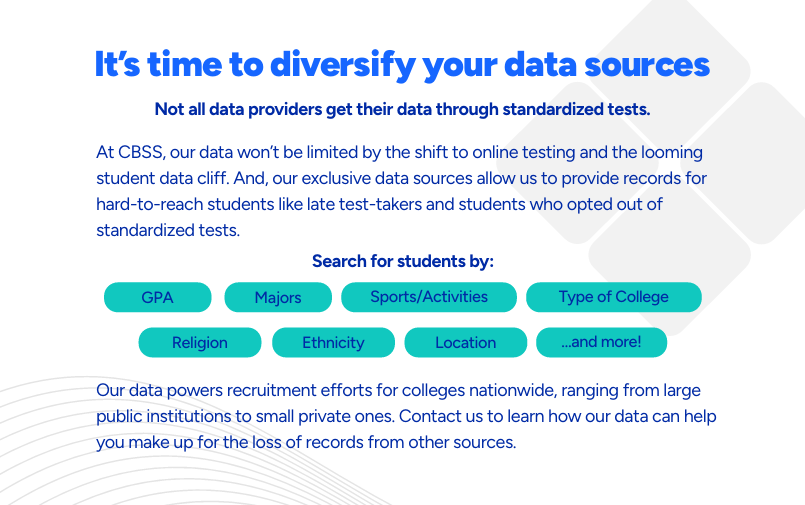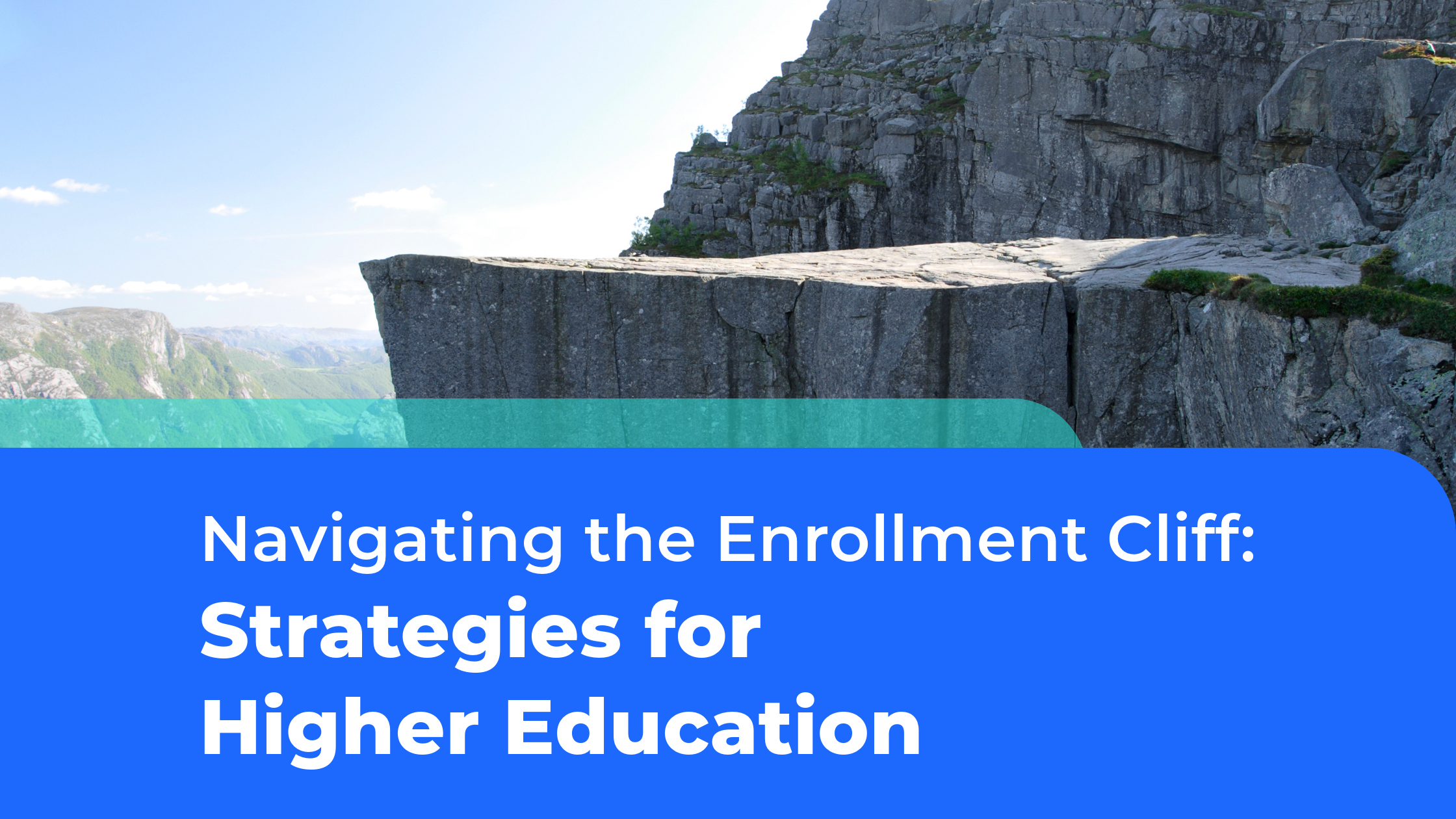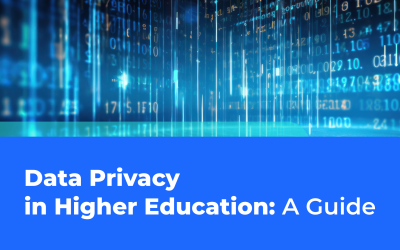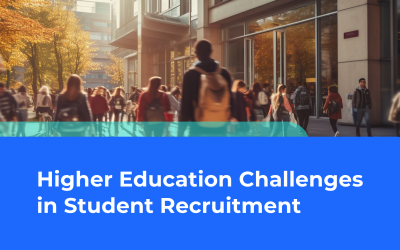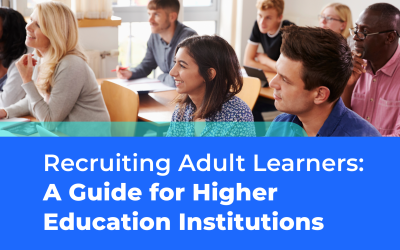Recruiters and admission officers are struggling to find, recruit, and admit students—especially within their decreasing budgets. As a result, colleges are seeing a decline in enrollment; this is called the enrollment cliff.
High school graduates are expected to peak in 2025, which means that many colleges will see a continuous decline in the number of student names available for their recruitment efforts in the years to come. To adapt to the changing landscape, admissions offices need to evolve their recruitment processes and find new ways to connect and engage with student prospects.
This guide will provide you with information about the enrollment cliff and the various factors that have led to this issue, the impact this will have on college admissions, and how colleges can adapt to the enrollment drop.
What is the enrollment cliff?
The enrollment cliff is the predicted decline of students enrolling in colleges. Because high school graduation rates are expected to peak at 3.5 million in 2025, enrollments are expected to decrease 15% over the next 5-10 years. This will impact colleges throughout the United States.
What Caused the Decline in College Students?
There are various factors that have led to the decline in student enrollment. Below are the contributing factors that are impacting the number of students enrolling in degree programs:
Demographic Factors
During the Great Recession, there was a decline in birth rates. As those children enter high school, we will see a decline in high school graduation numbers. Some colleges will be impacted by this factor more than others, depending on the location of the colleges and the areas most impacted by the decline in birth rates.
Economic Concerns
With the rise of inflation, many young adults may be nervous about attending college due to financial concerns. Many students take out loans for tuition, but other expenses surrounding college add up.
Based on a recent survey, 60% of current students say they have considered dropping out because of financial stress, while 19% of undergraduate students did drop out because of financial concerns.
Rising College Costs
The rising cost of college is a big concern for many students. On average, 50.8% of middle-income students take federal loans to help pay for college. Once students graduate with a university degree, they are then faced with paying off debt for several years. Because of this concern, many students are delaying their college enrollment or finding alternative paths.
Cultural Attitudes
With lower trust in higher education, rising costs, and many students feeling uncertain about their future, many high school graduates are opting for alternative education routes. A recent report found that 63% of graduates are open to other educational options other than traditional college.
COVID-19 Effects
During the pandemic, many colleges and universities switched to online learning—which caused 25% of students to postpone going to college in 2021. Enrollment rates have slightly increased in the years since, but COVID-19 is still a contributing factor in the enrollment cliff.
Changes in Standardized Testing
As data privacy restrictions grow around standardized tests and online testing grows in popularity, students must opt-in to make their data available to schools. This change will cause a 40% decrease in the number of student records from some sources, posing a challenge for many colleges.
How the Enrollment Cliff will Impact the Higher Education Sector
The enrollment cliff will impact every college and university differently. Whether your college is public or private and no matter where your college is located, it will be affected.
How the enrollment cliff will impact colleges
Because fewer students are applying and enrolling in college, many institutions are going to see a drop in their enrollment rates—which will impact the revenue they receive from tuition. With reduced tuition revenue, certain programs could receive less funding, faculty and other staff could be laid off, and many colleges could face mergers or closures.
What type of colleges will be impacted by the enrollment cliff?
The enrollment cliff will impact public, private, and community colleges. Private colleges are typically smaller than public colleges, so it is important to ensure that their enrollment rate stays steady.
Public colleges, on the other hand, are state-funded and usually have a larger student population. However, with the various factors contributing to the enrollment cliff, even public colleges will be impacted by the declining number of high school graduates.
Community colleges are known for being an affordable option for students. While they may not feel the impact of the enrollment cliff as early as public or private colleges, they will also be impacted by the reduced number of high school graduates.
The Impact will Grow Over Time
The impact of the enrollment cliff will grow over time. High school graduate rates are expected to peak in 2025 and then decline over the next decade due to various demographic, economic, and other factors.
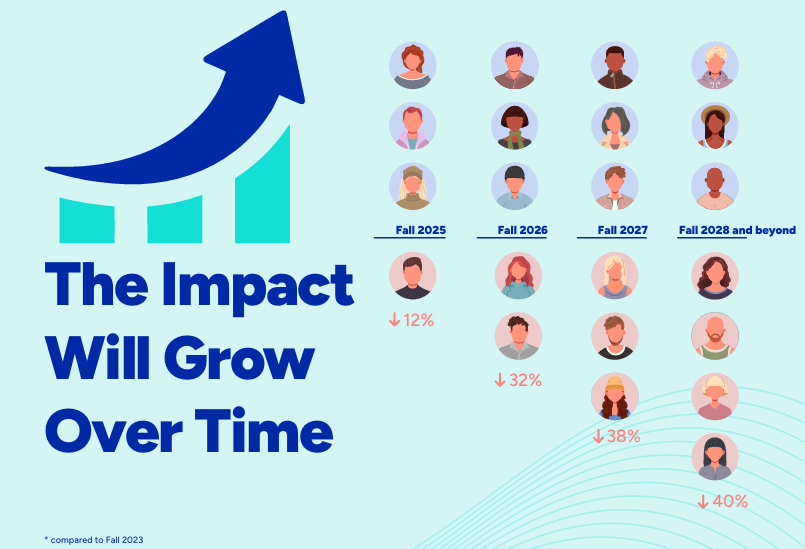
Because birth rates have continued to decline since the 2008 recession, there will be a continuous drop in high school graduates which will continue to be a main factor in the enrollment cliff.
Access to Students will Vary by Demographic
There are several reasons why access to student data will vary for college recruitment, and it’s important to note that typically hard-to-reach groups will only become more difficult to reach.
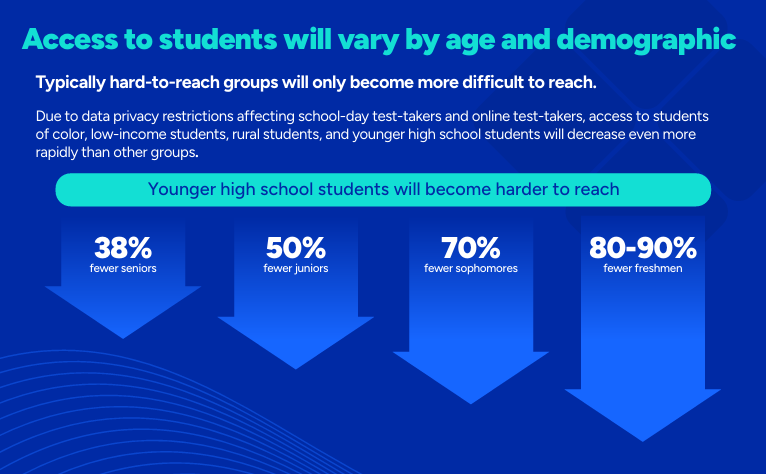
Demographic factors will determine if a college can reach certain groups of students; students’ location, type of high school, race, age, and socioeconomic status may make them especially difficult to reach. In addition to the demographic decline, access to students will also vary because of increased privacy restrictions for school-day and online test-takers.
The Impact will Vary By State
Depending on where your college is located, the impact of the enrollment cliff by state will differ—but there are 38 states that will feel the impact of the enrollment cliff more than the rest.
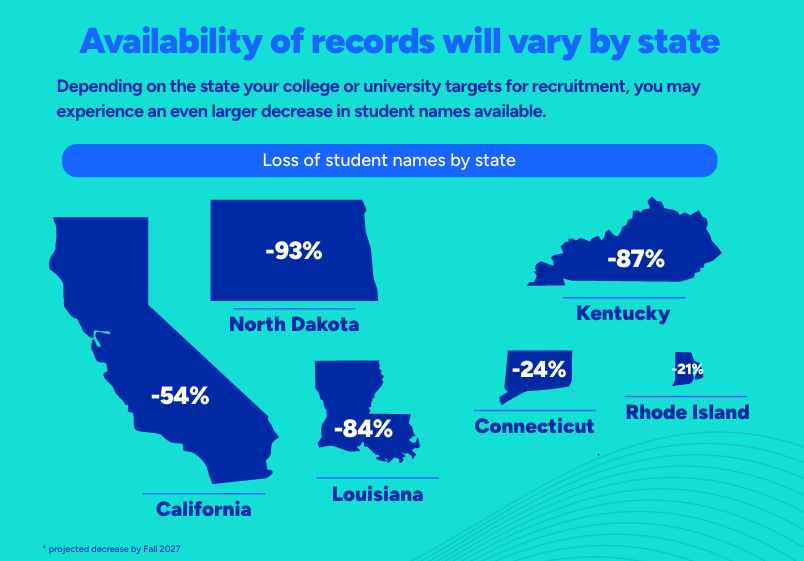
What states are vulnerable to the enrollment cliff?
States that are likely to see a decline in enrollments over the next few years include:
- North Dakota (-93%)
- Kentucky (-87%)
- Louisiana (-84%)
- California (-54%)
- Connecticut (-24%)
- Rhode Island (-21%)
Other states that will also see at least a 20% decline in student enrollment include:
- Hawaii
- Illinois
- New York
- West Virginia
- Wyoming
- New Mexico
- Michigan
Strategies to Navigate the Enrollment Cliff
With various factors contributing to the enrollment cliff, it’s important to act now and adapt your college’s recruitment strategy. Here are some tips on how your college can navigate the enrollment cliff:
Use Tailored Strategies to Connect with High School Graduates
Many high school students are tech-savvy and frequently use their phones to scroll through social media. Connecting with them online through digital ads and social media content can help increase their awareness of your college and lead students to explore further.
Use specific messaging that shows you understand their struggles and hesitations. Providing solutions to those pain points can help set you apart from other colleges.
Be Transparent About Finances and Assistance
Many students have financial concerns about attending college. Showing cost analyses in your marketing materials and being transparent about how much your programs cost can help ease students’ concerns.
Highlighting your college’s financial aid, scholarships, and other affordability incentives can also show students how your college can help support them as they attend your college.
Optimize College Enrollment with CBSS
Colleges will need to diversify their data sources and optimize their enrollment strategy to help keep their admission rates up. Many higher education institutions are turning to data as the solution. CBSS can provide your college with accurate and actionable data to improve your admissions.
At CBSS, our exclusive student data can provide the full profile you need to reach students across online and offline channels. And since our data isn’t collected through standardized tests, it won’t be limited by the shift to online testing and the looming student data cliff.
We hold over a third of the industry’s unique student recruitment records. We’re also the only data supplier that allows comprehensive deduplication against all sources.
Here are some more ways CBSS can help improve your recruitment strategy:
- Increase your outreach to non-traditional student groups.
- Reach students earlier who haven’t taken standardized tests yet.
- Use location-based targeting in the areas near your school can help increase your college’s awareness.
Start Preparing for the Enrollment Cliff Now
2025 is here—which means that enrollment for colleges will peak this year. Now’s the time to start updating your college’s recruitment strategy to prepare for the enrollment cliff. Contact CBSS today to learn more about how our unique data can improve your enrollment rates.
Learn More about the Enrollment Cliff
- Recruiting adult learners can help with your college’s enrollment rates. Learn more about adult learners here.
- Higher Ed Dive frequently provides helpful articles about the enrollment cliff. Check out their articles on enrollment or the latest statistics and information about the enrollment cliff.
- There are many contributing factors to the enrollment cliff. Learn more about them here in this helpful infographic.
